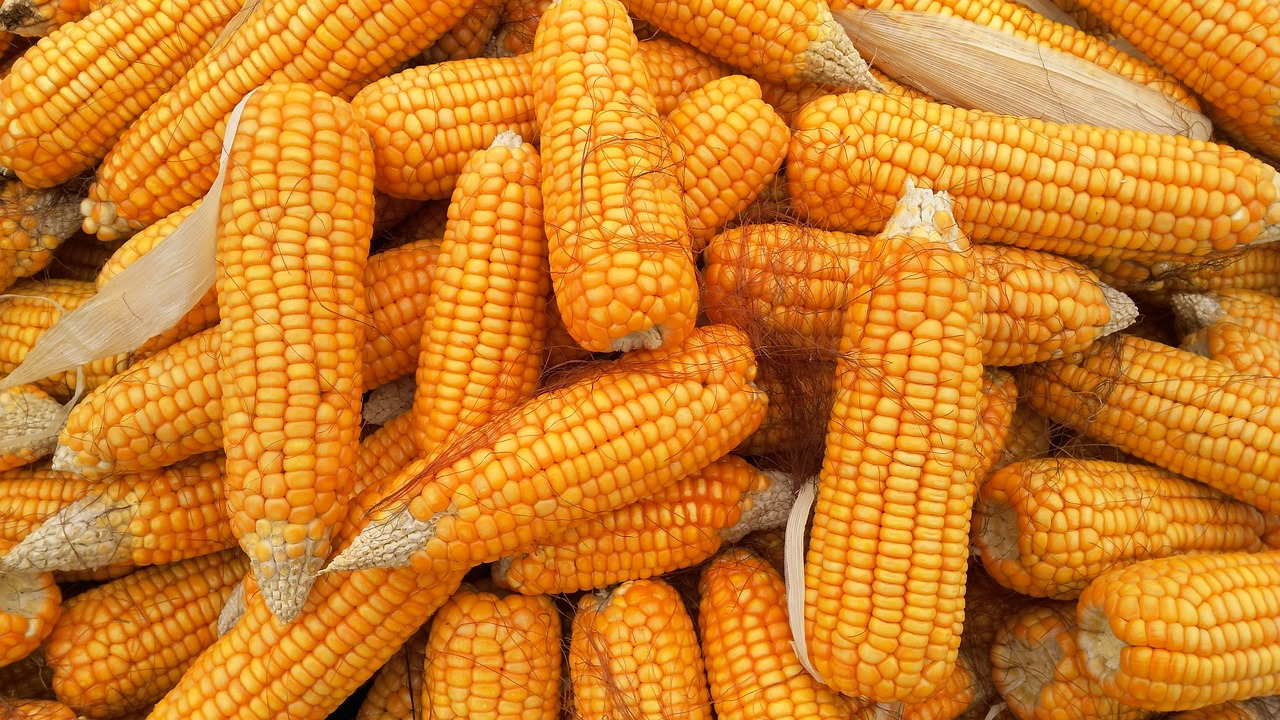
Corn markets showed signs of life in early 2025 after a tough year of price declines, creating fresh opportunities for traders. After the USDA's recent WASDE report, the supply outlook is clearer—but will demand and global factors drive a sustained rally? Volatility will increase, and the CME Group will introduce five new micro contracts, including corn, soybean, Chicago wheat, soybean oil, and soybean meal, to accommodate smaller retail trading accounts.

Source: Barchart
2024 was a challenging year for corn producers. As prices declined to production cost due to the bumper crop harvest in the US and South America's significant corn crop yields. The daily December corn (popular hedging crop month) chart shows how prices had a seasonal high peak in late spring of 2024. Hedging prices were lower than the previous season, and producers had hedge prices of under $5.00 per bushel. Many farmers appeared to have waited for higher prices to hedge and were later surprised by the sudden drop to the $4.30 level. This resulted in a record post-harvest unpriced corn on farms across the country. The bumper crop and inventory of unpriced corn led to aggressive selling on the initial September price rally. Prices returned to the harvest lows in late November, and some buying was found as prices began to rally.
In January, the United States Department of Agriculture (USDA) released a report that surprised many in the market, claiming there was less corn carryover than had been expected. Exports began to pick up at about the same time. Ethanol production increased, leading to a more severe supply drawdown. All of these events led to a healthy post-harvest rally.
Will the rally continue into the planting season?

Source: Moore Research Center, Inc. (MRCI)
MRCI research has discovered that for the past 15 years, the seasonal pattern (black line) for cash corn prices has been to make a seasonal high in June/July and trend down into October as the anticipated supply coming to market will lower corn prices. From October, prices have had a traditional post-harvest rally into the planting season from May to June, allowing producers to hedge their new crop from the anticipated price decline into the harvest season.
As a crucial reminder, while seasonal patterns can provide valuable insights, they should not be the basis for trading decisions. Traders must consider other technical and fundamental indicators, risk management strategies, and market conditions to make well-informed and balanced trading choices.
The previous daily December corn chart shows that last year's planting season high was on schedule. The post-harvest rally began in late fall and has continued so far. But what factors support this rally, and which may impact it?

Source: Barchart
The above spread chart refers to the old crop – new crop spread. July is considered a carryover crop from the previous harvest season (old crop), and December is the new crop from this year's upcoming harvest. Traders pay attention to where the spread is trading concerning the scale's zero line. When the price exceeds the zero line, it lets market participants know there is excessive demand for the product because the near month of July is being aggressively bought compared to the December contract. This setup typically leads to a bull market in a commodity.
When the price trades less than the zero line, the supply-demand equation is considered normal and does not have a price-predicting capability.
Notice how the spread trades positive during seasonal buying and trades negative during seasonal price declines into harvest season. Studying this spread is an excellent confirmation that a seasonal pattern is about to impact the market.
A couple of things that concern me for the current uptrend

Source: CME Group
The disaggregated commitment of traders report for the producer/processors of the corn market shows that the producers are aggressively selling (red bars) this rally. The yellow line is the price of corn. We are trading just under $5.00 for the March front-month contract. Looking to the left of the graph, we can see that 2021 corn prices peaked as producers had 1.4 million short positions. Then, in 2022, corn prices were trading at all-time highs, and producers had 1.2 million short positions. Both of these periods resulted in lower prices.
What is concerning now is that prices are under $5.00, and producers are already short 1.2 million contracts. Why are they so aggressive at these lower prices? Perhaps there was still a lot of unpriced corn, and the commercials felt corn prices would not keep going higher. We don't know, but this situation raises a red flag.
The table in the graph raises even more concern. Currently, producers are short 1.2 million contracts, and at the same time last year, they only had 508K. Why so many this year at lower prices?

Source: CME Group
The other large elephant in the room is managed money traders. They typically follow trends and have the capital to push trends further than most expect. A lot of money has been lost trying to predict when they will stop buying or selling in these significant trends they establish.
The 5-year COT report shows the current uptrend in price (yellow line), and managed money has been aggressively buying each week (blue bars). Looking to the left again, prices in 2021 and 2022 were much higher than they are currently. Yet, today, managed money already has as many long positions, and the market has not moved as far as it did when they previously had this many long positions.

Source: CME Group
Another way to study the COT report is to look at the net positions (longs—shorts). The net positions for managed money (yellow line) are near a five-year high. For the relatively short distance corn has moved, it seems it is taking managed money more contracts, leading me to believe the producers are absorbing these longs (aggressively selling). Managed money net positions today are 351k contracts. In 2022, they were 384K; in 2021, they were 402K.

Source: CME Group
The disaggregated COT report began in 2006. Data from that time shows that managed money now holds more long positions than ever.
So now what?
The uptrend in corn prices looks strong and follows its seasonal buying window. It appears that managed money is aggressively buying, but they may have overextended their bullishness. I'm a trend follower and am not picking a top. But these events I've written about have given me reason for concern about this corn market price rally.
Assets to participate in the corn market
Traders can use the standard-size futures contract (ZC) or the mini-size (XN), and on February 24, 2025, the new micro-contract (MZC). Equity traders can trade the exchange-traded fund (ETF) named CORN.
CME Group, the world's leading derivatives marketplace, announced that it will launch a suite of micro grain and oilseed futures contracts on February 24, 2025, pending regulatory review. These contracts will be cash-settled and one-tenth the size of the company's corn, wheat, soybean, soybean oil, and soybean meal futures. These smaller-sized contracts will provide additional flexibility for market participants to manage their agricultural portfolios more precisely.
The smaller contract size reduces the capital requirements to trade these agricultural products. Also, the smaller contract size reduces the notional value of the contract traded. For example, if a trader trades the standard size contract of 5,000 bushels of corn currently priced at $4.95 per bushel, the notional value of that contract is $24,750. The notional value will only be $2,475 if the trader uses the 500-bushel micro-corn contract. Currently, the maintenance margin to trade the standard-size contract is $1,050. The micro-contract would only be $105. These products are financially settled, with no concern about physical deliveries.

In Closing…..
The recent rally of the corn market has caught traders' attention as prices attempt to recover from the lows in 2024. With the USDA's latest crop report indicating a tighter-than-expected supply, exports increasing, and ethanol demand rising, the market has found some renewed strength. However, despite these bullish factors, there are concerns that producers are aggressively selling into the rally, potentially capping upside momentum. Additionally, managed money has taken on historically high long positions, raising questions about whether the uptrend has become overstretched. Traders must remain vigilant, as seasonal patterns, technical indicators, and fundamental data will all shape price action moving forward.
CME Group's new micro grain and oilseed futures contracts provide an exciting opportunity for traders looking to capitalize on corn market movements. Launching on February 24, 2025, these contracts will be one-tenth the size of standard futures, reducing capital requirements and allowing for more precise risk management. With lower margin requirements and cash settlement, retail traders and smaller hedgers can now participate more efficiently in the agricultural markets. As volatility increases and key supply-demand factors continue to unfold, these micro contracts could be a game-changer for those looking to navigate the evolving landscape of corn trading.







